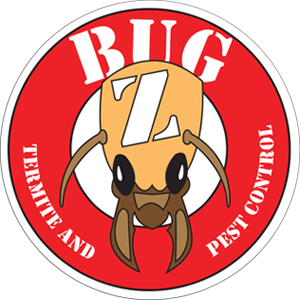Carpenter Ants
Carpenter ants are a species of ant that get their name from the way they build nests, because they excavate wood and form smooth tunnels inside of the wood.
-
What do Carpenter ants look like?
Carpenter ants rank among the largest ants found in the United States, with their size generally ranging from 1/4 inch to 1/2 inch. The queens of these ants are even larger, measuring around 9/16 inch.
These ants come in various colors, predominantly displaying a dull black hue. However, shades of brown, red, or a mix of these colors are also common among carpenter ants.
-
Nuisance or danger?
Carpenter ants are considered a nuisance when they invade homes and structures, but they can also pose a danger to the integrity of wood in buildings over time. Unlike termites, carpenter ants do not eat wood but excavate it to create nests, which can weaken the structure of wood over time if infestations are not managed. In terms of health risks, carpenter ants do not pose a significant threat to humans; they do not carry disease like some other pests. However, they can bite if threatened, causing minor discomfort.
While they are primarily a nuisance due to their presence in homes, the main danger from carpenter ants arises from the structural damage they can cause. This damage can be costly to repair if not addressed early. Therefore, it's important to manage and eliminate carpenter ant infestations promptly to prevent structural damage to homes and other buildings.
-
How Do I Know If I Have Carpenter Ants?
Carpenter Ants usually come into buildings through cracks around doors, windows, or through plumbing and electrical penetrations in the home. They will also crawl along overhead wires, shrubs, or tree limbs outdoors that touch the building above ground, then enter the home through any small opening.
-
Why Do I Have Them?
Carpenter ants are attracted to moist or decaying wood, making homes with moisture issues or pre-existing damage particularly vulnerable to infestation. Here are some common reasons why you might have carpenter ants:
1. Moisture Problems: Areas of your home that have water damage, leakage, or high humidity can attract carpenter ants. They prefer to establish their nests in moist wood, which is easier to excavate.
2. Decaying Wood: If your home has decaying wood in structures, foundations, or near the roof, it could be an inviting environment for carpenter ants. This includes old tree stumps, landscaping materials, or wood piles near your home.
3. Access Points: Cracks in the foundation, gaps around windows or doors, or utility lines that enter your home can provide entry points for carpenter ants. Once inside, they can travel through walls or along pipes to find suitable nesting sites.
4. Food Sources: While carpenter ants do not eat wood, they are attracted to food sources within your home, including sweets, meats, fats, and other insects. If food is readily available, it can encourage carpenter ants to establish a colony nearby.
5. Nearby Colonies: If there are carpenter ant colonies near your home, such as in neighboring trees or structures, it increases the risk of them migrating into your home in search of new nesting sites.
To manage and prevent carpenter ant infestations, it's important to address these factors by repairing moisture issues, removing decaying wood, sealing entry points, managing food sources, and considering professional pest control if you suspect an infestation. Give us a call at BugZ Termite and Pest Control and we’d be happy to help.
-
What Should I Do If I Have Carpenter Ants?
If you suspect you have a carpenter ant infestation, acting promptly can help prevent significant damage to your home. Here's a step-by-step guide on what to do:
1. Identify the Infestation: Look for signs of carpenter ants, such as sawdust-like material (frass) that they leave behind from tunneling through wood, live ants, or the sounds of their activity inside walls. Carpenter ants are larger than most ants, typically black or dark in color.
2. Locate the Nest: This can be challenging, as nests are often hidden within structures or in other concealed locations. You might find them in moist areas, near leaks, or in decaying wood. Sometimes, following the ants can lead you to their nest.
3. Eliminate Moisture Problems: Repair leaks, improve drainage, and address any areas of moisture accumulation in your home. This makes the environment less attractive to carpenter ants.
4. Remove Access and Food Sources: Seal cracks and crevices around your home's foundation, windows, and doors. Keep food in sealed containers and maintain cleanliness to reduce attractions.
5. Remove Nesting Materials: Get rid of materials that can serve as nesting sites, such as rotting wood, tree stumps, and piles of debris near your home.
6. Professional Pest Control: If the infestation is large or the nest is difficult to locate and eliminate, it may be best to contact BugZ Termite and Pest Control. Our team at BugZ has the experience, tools, and knowledge to effectively deal with carpenter ant infestations.
8. Ongoing Monitoring: After treatment, continue to monitor for signs of carpenter ants or new activity. Regularly inspect your home for potential entry points or moisture issues and address them promptly.
Addressing a carpenter ant problem early can prevent more significant damage and potentially save on costly repairs.
-
WHAT TREATMENT IS EFFECTIVE AND HOW DO I PREPARE FOR IT?
NEVER use an over-the-counter insecticide for ant infestations. These readily available chemicals kill on contact, giving you the false sense that you’ve killed them all! In fact, you’ve now caused the queen to go into “overdrive”, reproducing her missing colony members at a much more rapid pace. Ant treatment involves treating the nest and baiting near scent trails, essentially transferring chemical back to the queen. Once she’s dead, the colony dies soon after.
BugZ Termite and Pest Control at the first sign of any ant in the house or elsewhere on the property!
Before the Professional Arrives
1. Identify Activity: Note areas where you've seen ants or signs of ants, such as frass (sawdust-like material), damaged wood, or live ants. This information can help the professional quickly locate nests.
2. Clear Access: Move furniture, appliances, or stored items away from walls, especially in areas where you've noticed ant activity. This gives the professional clear access to inspect and treat these areas.
3. Address Moisture Issues: If possible, repair any leaks or moisture problems before the pest control visit. This makes your home less attractive to carpenter ants and helps prevent future infestations.
4. Clean the House A clean home can make it easier for our BugZ Termite and Pest Control professional to work and may help in identifying ant entry points. Ensure that kitchen areas are free of crumbs and sticky residues that can attract ants.
After the Treatment
- Preventive Measures: Continue to address any moisture issues, seal entry points, and maintain a clean environment to prevent future infestations.
- Monitor for Activity: Keep an eye out for any continuing signs of carpenter ant activity. If you notice more ants after a week or so, contact the pest control service for further advice or treatment.
BugZ Termite and Pest control have the expertise to effectively deal with carpenter ant infestations, using methods and products that are safe and effective. Their approach will consider the specifics of your home and infestation, ensuring a tailored solution.
"If you can’t kill them…call us!"
© 2024 All Rights Reserved | Bug-Z Termite & Pest Control


